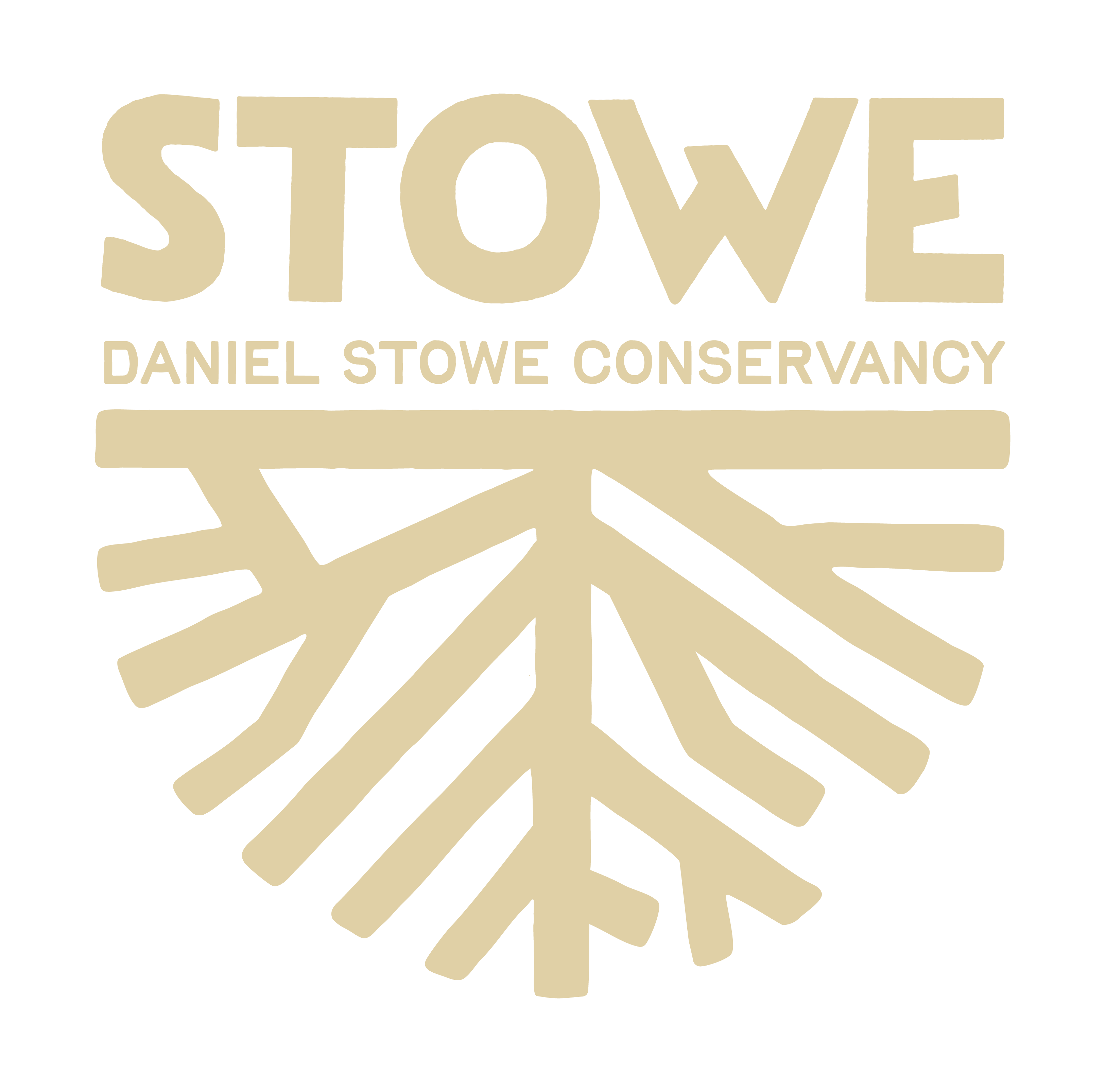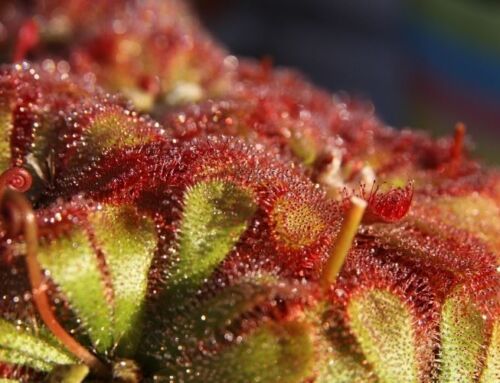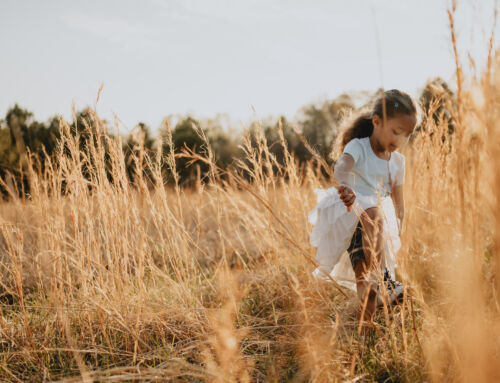All photos featured were taken by Stowe’s Ecological Stewardship Manager, Janet Manuel.

Don't worry...the Prairie Castle is not on fire! But it did provide a great view of our prescribed burn
Conservation is at the heart of everything we do at Daniel Stowe Conservancy and sometimes when it comes to preserving and protecting our 380 acres, our staff and visitors should expect the unexpected.
Our Leave it Better blog series focuses on sustainability efforts at Stowe and this week we’re excited to highlight a project that our team has been working on for a long time, one that is as thrilling and beautiful as it is important: a prescribed prairie burn.
Most folks wouldn’t necessarily equate fire to be a good thing for our natural resources. Typically, fire causes a wake of destruction but when used properly and under careful control, fire can be a powerful tool to maintain the precious ecosystems of our Piedmont Prairie. In this iteration of Leave It Better, we’re breaking down why prescribed burns are a good thing and recapping the prairie burn that took place at Stowe on Tuesday, November 11 (plus some breathtaking photos of the blaze!).
Before we dive into the logistics of our prairie burn, let’s zoom out and talk big picture. Why are prairie burns so beneficial?
According to the Piedmont Prescribed Burn Association (PBA), prairie burns have historic roots in our land – over 10,000 years of it!
“Indigenous Peoples employed fire as a land management tool, shaping open, grassland landscapes, fostering desired vegetation growth and enriching wildlife habitats. Early European settlers continued this tradition, recognizing the benefits of controlled burns. In the early 20th century, fire suppression emerged as the prevailing strategy, resulting in adverse habitat effects and increased wildfire dangers. Recent decades have witnessed a resurgence in the use of fire as management tool” (Piedmont PBA).
Because fires have historically been a natural piece of the prairie ecosystem through lightning strikes and burning implemented by Indigenous Peoples, mimicking this process today restores balance that may have been wiped out over the last century.
In short, fire actually creates more biodiversity! Burning prairies naturally opens up space for native plant species to grow and thrive while simultaneously removing layers of dead plant matter that blocks these native plants from sunlight and nutrients. These native plants can then support our prairie wildlife who use them for food and shelter.
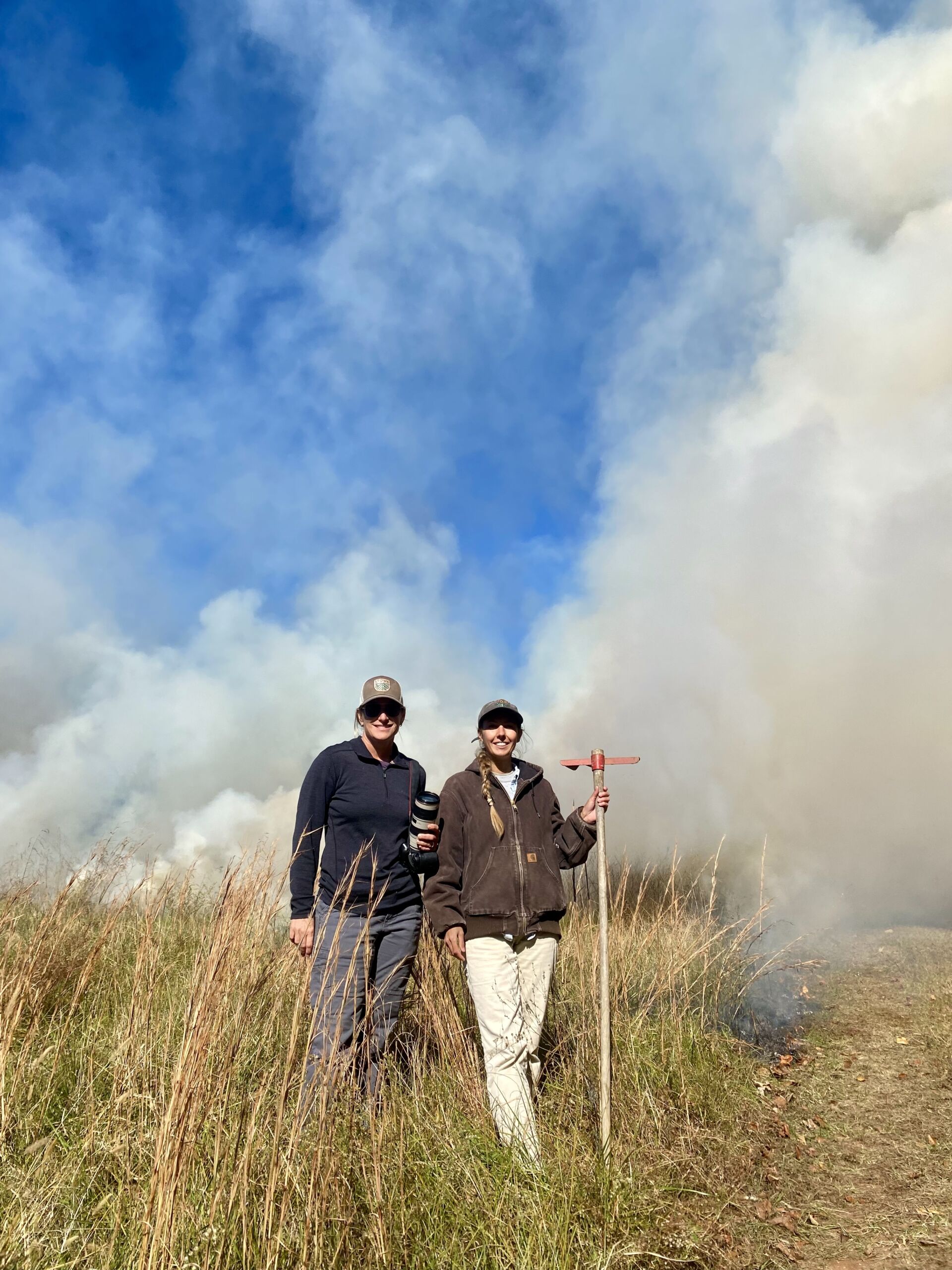
Janet + Cassy during the burn
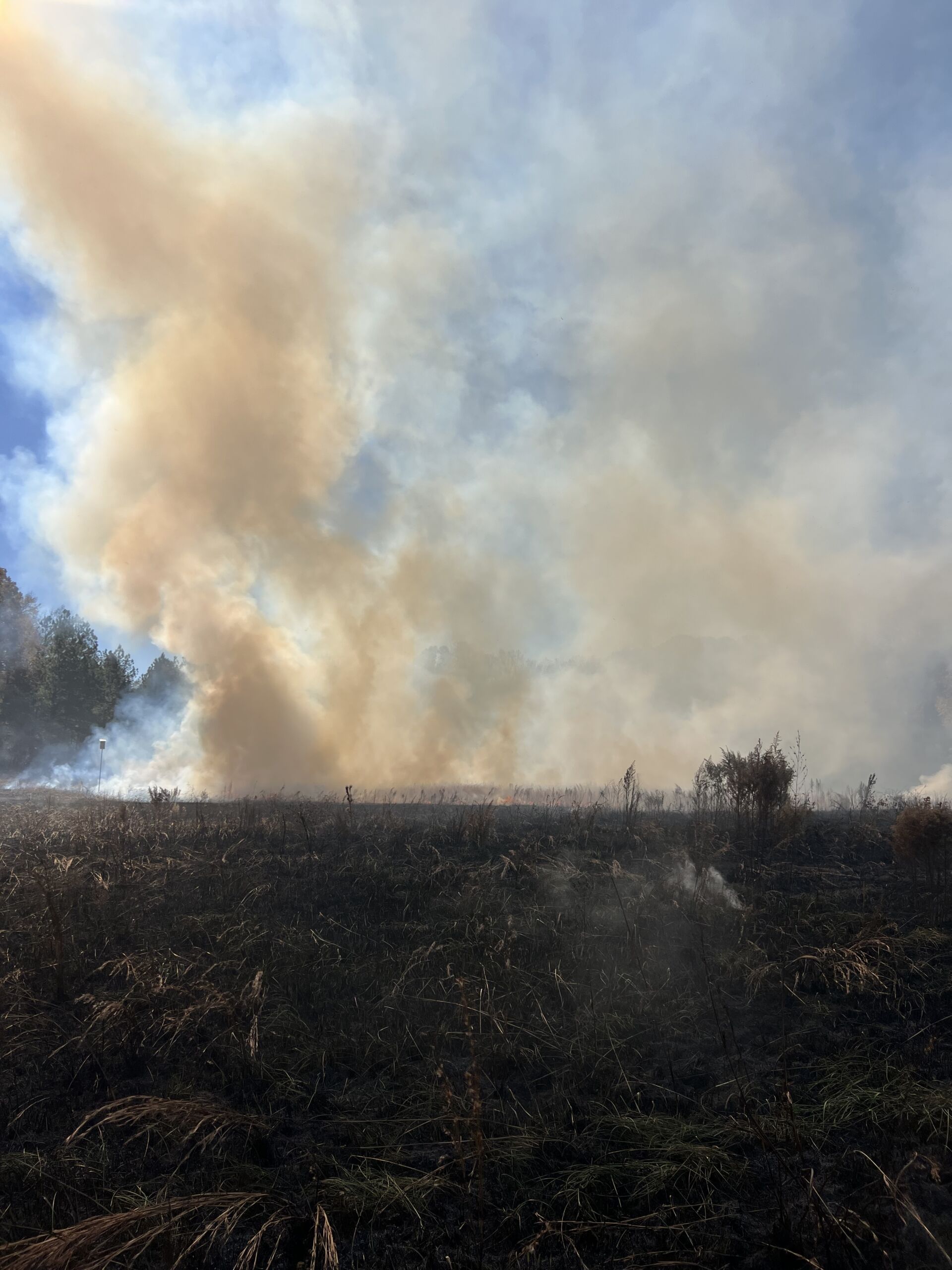
Smoke rising during Stowe's burn on Nov. 11
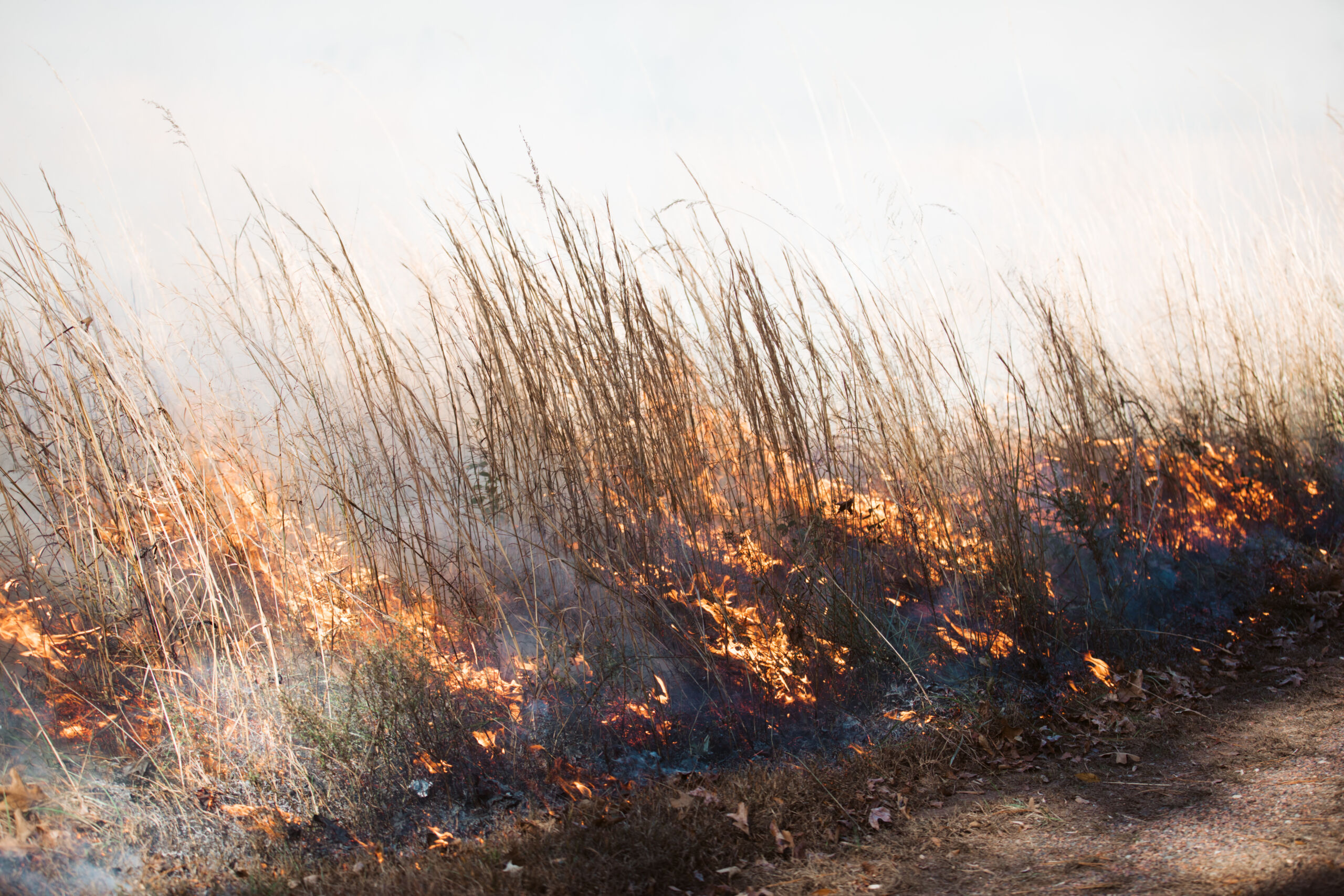
Close up of the prairie burn flames
Cassy Hallman, Stowe’s Conservation Ecologist, filled us in on the many ways that the burn benefited our Piedmont Prairie:
“Positive impacts include a decrease in woody plants and invasive species, an increase of exposed soil and native plant germination and an overall increase of diversity of plant species.”
Cassy is also the driving force behind the prescribed burn. As our prairie’s caretaker, she knew the impactful difference that a prescribed burn could make and has been advocating for the burn for a long time. Over the last year, she has taken the steps to become certified to host prescribed burns at Stowe. In fact, Cassy and her team attempted a first effort toward a prairie burn all the way back in March of 2025. Unfortunately, the North Carolina burn ban was put into effect that very same week and the prairie burn was put on the back burner in spring.
Clearly, there are many complex factors that our Sustainability team needed to take into account before scheduling a burn. Weather and moisture are, of course, huge factors when planning a burn. These are the two main reasons that Stowe’s burn took place when it did; our Sustainability team was originally planning for a burn at the end of October or the first week of November, but since we were hit with rain, the ground was too wet to burn. Other factors they had to consider before scheduling the burn included:
- Wind: Prescribed fires are easier to control when the wind levels are more calm and steady
- Relative Humidity: As relative humidity decreases, fuels become drier. As relative humidity increases, fuels retain more moisture and are less apt to burn (IN.gov)
- Temperature: Generally, the best temperature for a prescribed burn falls between 40-60 degrees Fahrenheit. While there’s room for some fluctuation, temperatures above 80 degrees can be hazardous, while below freezing can often lead to ground that’s too wet to burn.
After carefully considering all of these factors, Cassy and Janet, our Ecological Stewardship Manager, landed on Tuesday, November 11 as the date for Stowe’s prairie burn. This decision had to happen just a few days before the burn to ensure that weather conditions would be ideal and thankfully Cassy and Janet’s luck held out: they were able to officially schedule the burn.
Safety, Precaution + Communications
Of course, completing a prescribed burn at Stowe causes a lot of smoke – and smoke tends to cause a commotion! To mitigate any public panic, Cassy and Janet partnered with the Belmont Fire Department, who were not only on site the day of the burn, but put out reverse 911 calls to the community to give them a heads up that the burn was happening. The Belmont Fire Department also helped Stowe spread the word online and on social media to raise awareness and build education around prescribed burns.
Cassy and Janet took safety extremely seriously and worked under the guidance of the experienced burn boss Dan Brandon and Joe Lineberger, Gaston County Natural Resources Planner, with additional support from the Belmont Fire Department and trained members of Stowe’s Horticulture staff. The burn took place on a day that The Gardens were not open to the public so there was no chance of visitors being present, but communications leading up to the burn advised that folks who may be sensitive to fire and smoke should avoid Stowe property at the time of the burn.
The Burn Itself
Finally, after over a year of planning, training and preparing, it was time to burn the Piedmont Prairie at noon on Tuesday, November 11. While the burn itself took place in under an hour, the plumes of smoke and flickering flames were a truly spectacular sight. At its peak, the smoke rose high above the tree tops, forming an impressive, billowing wall. Witnessing so many passionate conservationists working together to build a fire capable of literally burning new life into the prairie was a treat for the handful of Stowe staff and volunteers in attendance (watching the burn from a safe distance away, of course).
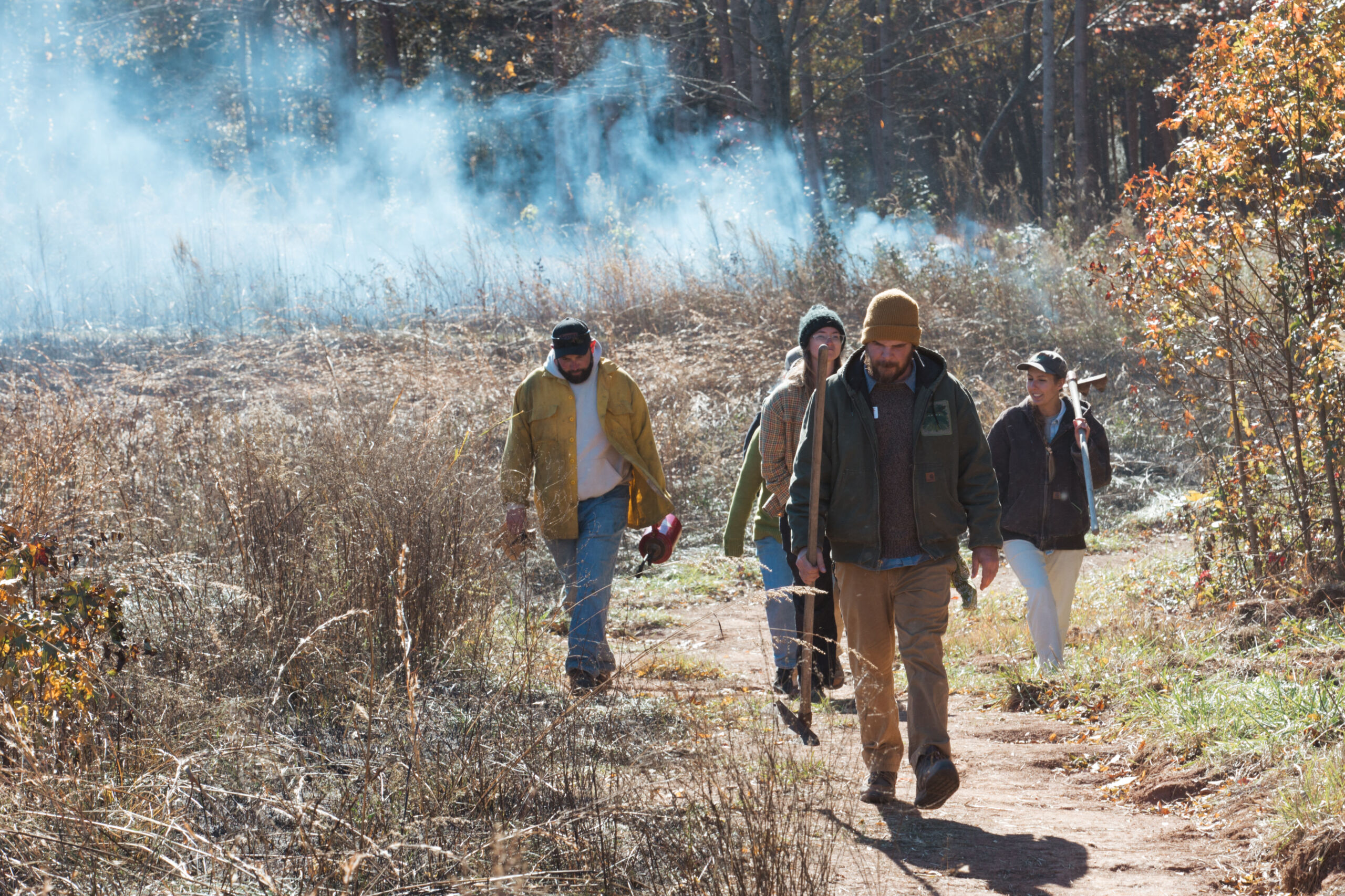
Stowe Horticulture Staff assisting with the burn
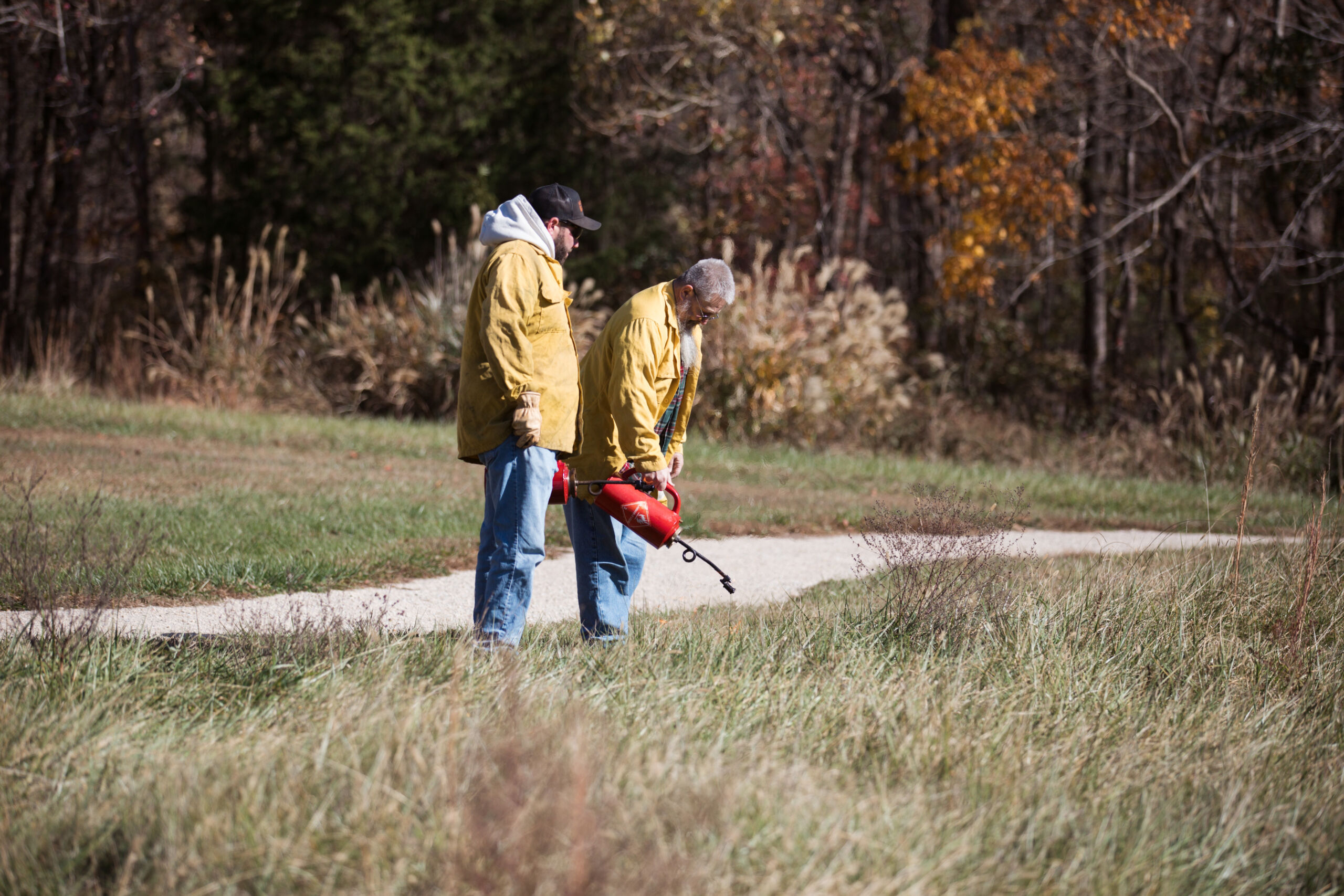
Dan + Joe working on the burn
Once the burn was complete, the expanse of burned land promised new life for Stowe’s Piedmont Prairie. While it may look brown and charred now, the land post-burn will reveal its true growth this spring. We encourage you to visit the prairie now (and maybe snap a few photos for reference) and return in the spring to marvel at the new native plant growth and improved habitats for birds, insects and other prairie creatures.

Prairie pre-burn
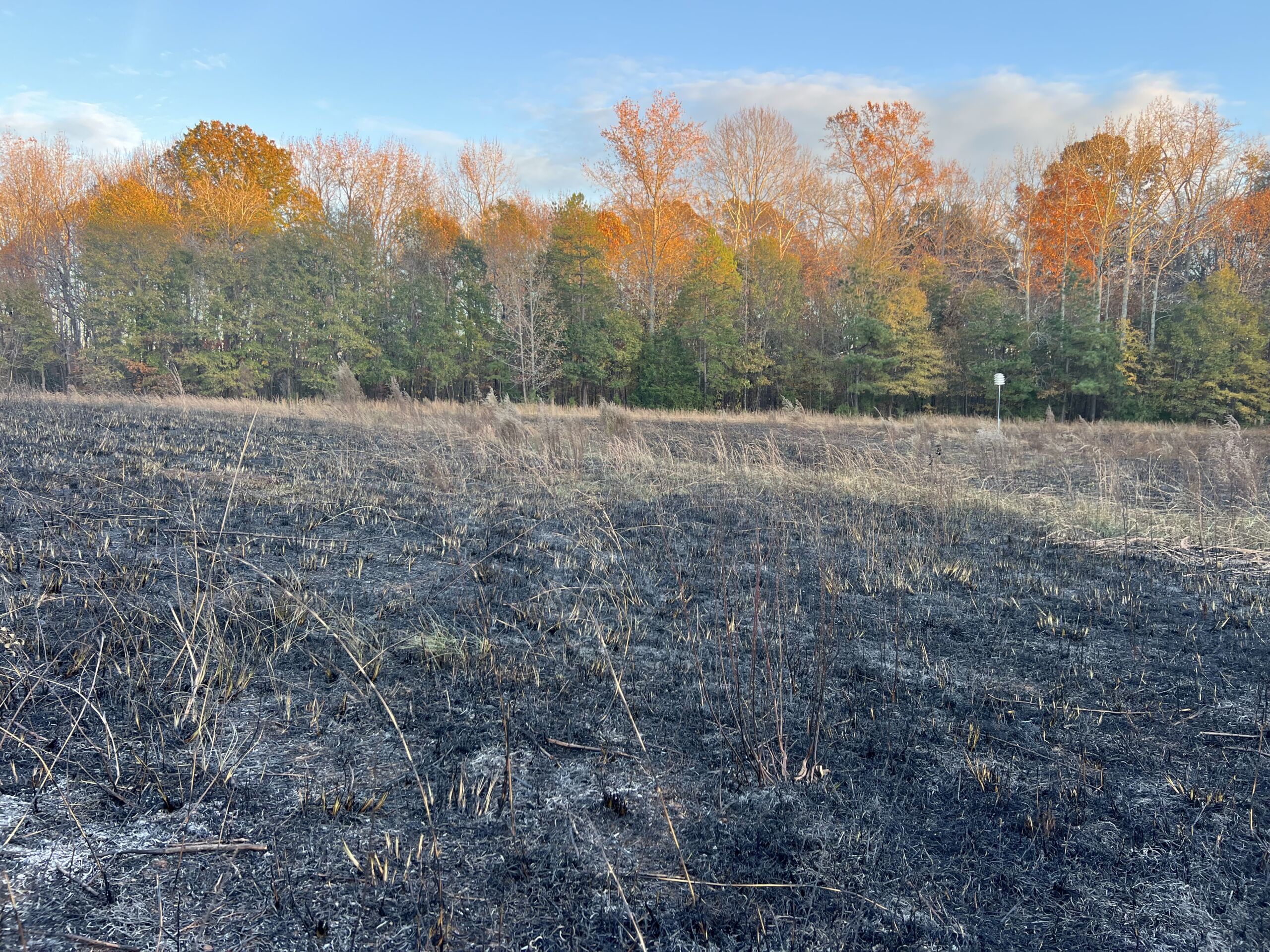
Prairie post-burn
Visitors tend to picture perfectly manicured flower beds when imagining a botanical garden, and while The Gardens at Stowe have plenty of those, our beautiful Piedmont Prairie is just as much an essential piece of Stowe. It is a haven for pollinators, blooming with native plants and flowers. It is a home for wildlife, where snakes, mice and birds live and rest. It is a tribute to the history of the Piedmont region, bringing us back to a time when prairies rolled through our landscape, bison roamed free and Indigenous tribes cared for the land and it, in turn, cared for them back. Our Sustainability team at Stowe recognizes its incredible value and potential and are working hard to restore it, one burn at a time.
If you haven’t checked out the Piedmont Prairie during your visit to Stowe, we encourage you to wander back beyond the formal Gardens to explore this unique landscape. It’s a little more wild and untamed than the rest of The Gardens, but we like it that way.
In the meantime, check out these amazing photos that Janet captured during the burn!
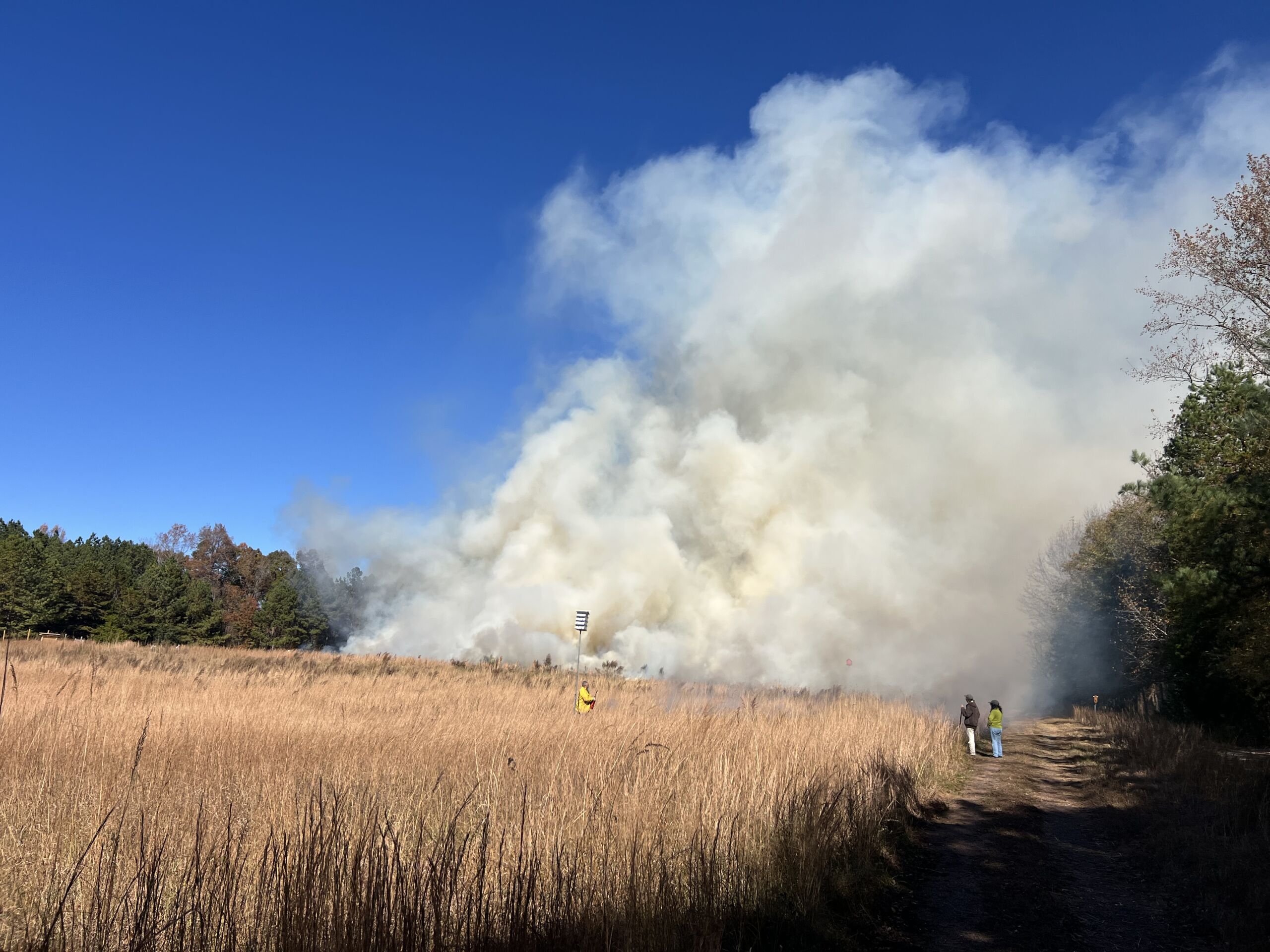

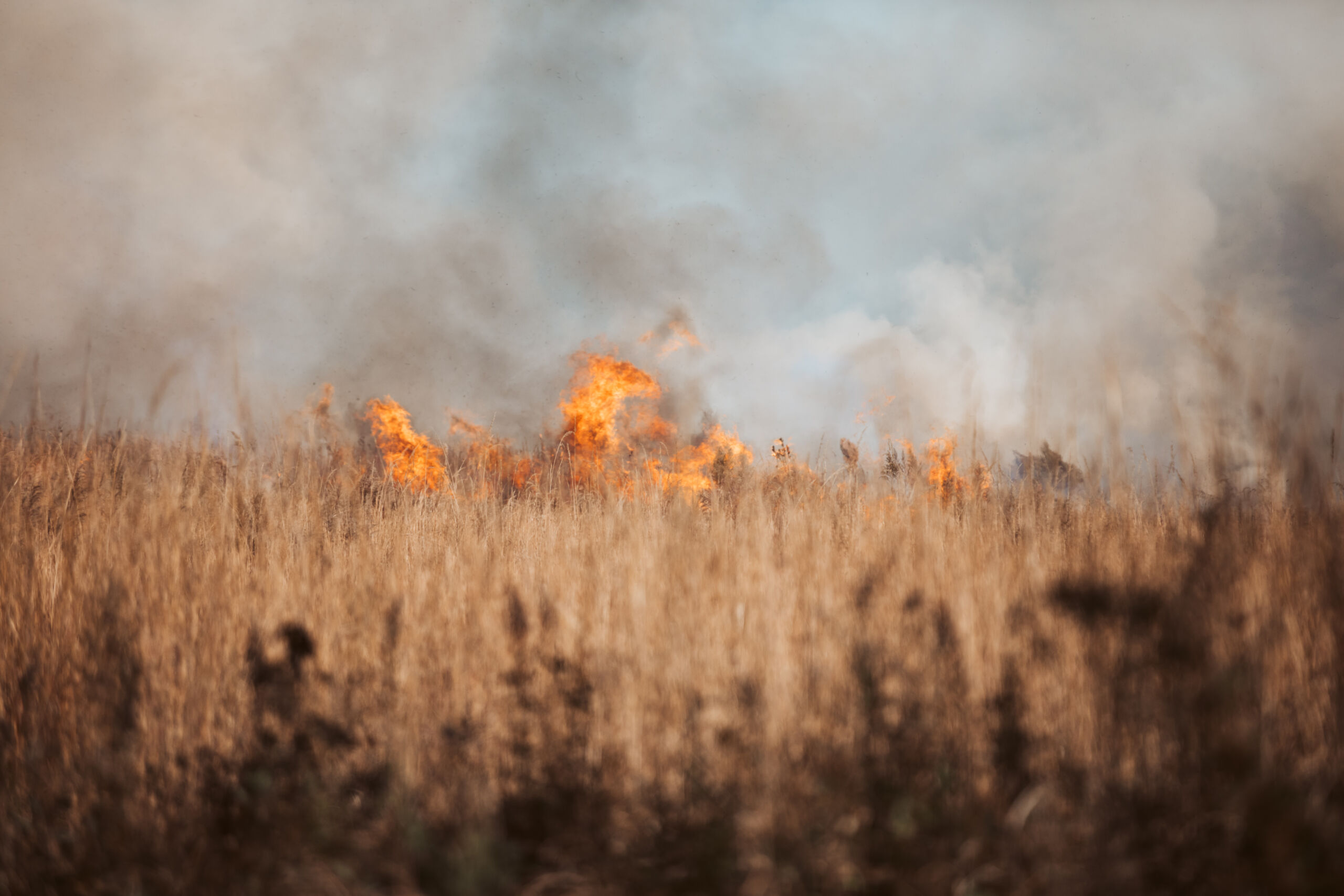



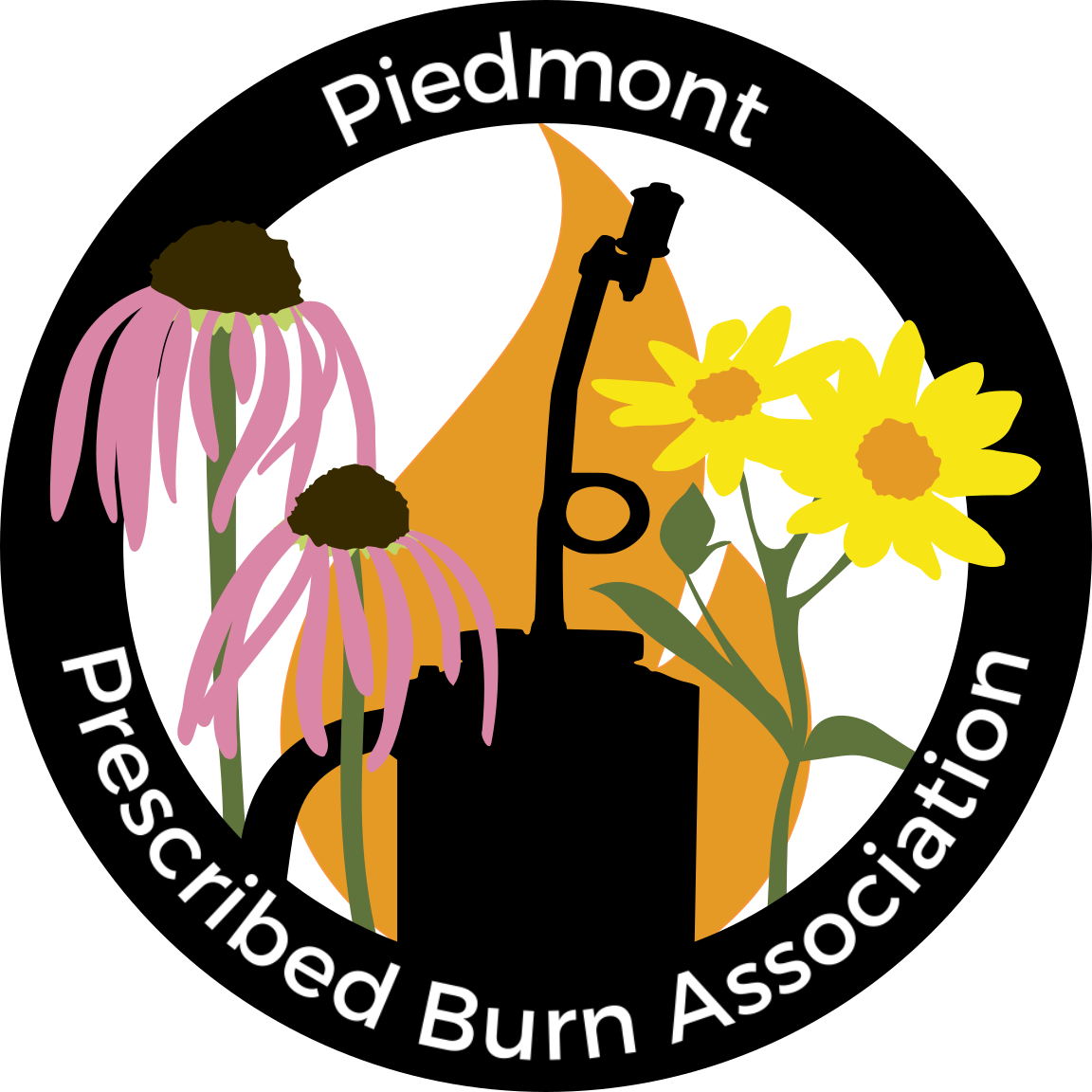
Daniel Stowe Conservancy extends this invitation to all: Find your path to nature.
We look forward to seeing you for the next edition of “Leave it Better”.
Until then, please check out the links below to help you get started!
